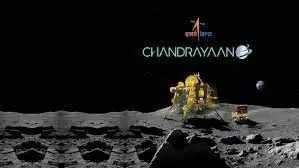Chandrayaan-3 Data Suggests Moon’s Surface Was Once an Ocean of Magma
Recent findings from India’s Chandrayaan-3 mission suggest that the Moon's surface might have been covered in a vast ocean of magma. This discovery, reported in the journal “Nature” , comes from an analysis of lunar soil data collected by the Pragyan rover, which was deployed by the Vikram lander after its successful soft landing near the Moon’s south pole on August 23, 2024.
The Pragyan rover analyzed the lunar soil across a 100-meter stretch, and its measurements indicated that the surface was predominantly made up of a single rock type known as ferroan anorthosite (FAN). This uniformity supports the theory that the Moon was once a molten ocean of magma.
The study's authors, including experts from the Physical Research Laboratory in Ahmedabad, highlighted that previous missions, like NASA's Apollo and the Soviet Union's Luna, primarily collected soil samples from the Moon's equatorial and mid-latitude regions. Chandrayaan-3’s data from the south pole provides a new perspective, reinforcing the idea that the Moon's surface has a common origin linked to a magma ocean.
This discovery adds significant insight into the Moon's geological history and supports long-standing theories about its formation.
To join us on Facebook Click Here and Subscribe to UdaipurTimes Broadcast channels on GoogleNews | Telegram | Signal



